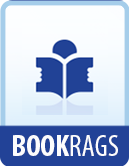The Marquess married Mary, daughter of William Feilding, third Earl of Denbigh, by his first wife, Mary, sister of John, first Baron of Kingston, in the peerage of Ireland. Lady Mary was, therefore, a relation of the novelist, Henry Fielding, whose surname was spelt differently because, he explained, his branch of the family was the only one that could spell correctly.
Of this marriage, there was issue:
(i.) William, who took the style of Viscount Newark until 1706, and then was known as Earl of Kingston until his death in 1713, at the age of twenty-one. He had married before 1711 Rachel, daughter of Thomas Baynton, of Little Charfield, Wilts, who outlived her husband eight years. There was a son, Evelyn, who succeeded to the peerage.
(ii.) Lady Mary, the subject of this memoir.
(iii.) Lady Frances, who in 1714 became the second wife of John Erskine, sixth or eleventh Earl of Mar; and
(iv.) Lady Evelyn, who married John, second Baron, and afterwards first Earl Gower, and died in June, 1727.
In the winter of 1697, when Lady Mary was eight years old, her mother died. After this, the little girl was allowed to run rather wild. Lord Kingston was very much a man about town and a gallant, and was too greatly occupied with his affairs and his parliamentary duties, which took him often from home, to concern himself about her education. In fact, before her mother’s death, it would seem that Lady Mary spent months at her grandmother’s, Mrs. Elizabeth Pierrepont, at her house at West Dean. When she was in her ninth year she returned to Holme Pierrepont, where, as she later complained, she was left “to the care of an old governess, who, though perfectly good and pious, wanted capacity.”
Lady Mary early had a taste for books, and enjoyed to the full the library, where she no doubt read much that was good for her, and a good deal that was not. She read everything that she could lay her hands on, the old romances, poetry, and plays. One account has it that she was taught Greek and Latin by her brother’s tutor; but Sir Leslie Stephen was doubtful about the Greek and inclined to the belief that she taught herself Latin. Later, certainly, she taught herself Italian, and quoted Tasso in her letters. In her studies she was encouraged by her uncle, William Feilding, and also by Bishop Burnet, of whom she said many years later: “I knew him in my very early youth, and his condescension in directing a girl in her studies is an obligation I can never forget.” She had literary aspirations, and just after her twenty-first birthday she submitted to Burnet, with the following letter, a translation of “Encheiridion” of Epictetus from the Latin version. This will be found in the collected works.
“July 20, 1710.
“My Lord,




